Per il secondo anno consecutivo protagonista della piazzetta e di alcuni tra gli angoli più suggestivi di Capri, Seo Young Deok, autore di imponenti sculture iperrealistiche di figure umane, rivela dettagli e retroscena sulle sue opere e sulla mostra open air, organizzata da Liquid Art System, “Unchained”.
Come vede le sue opere in dialogo con le zone più rappresentative dell’isola di Capri?
“Volevo creare uno spazio dove l’uomo moderno, sempre occupato, assorbito dal lavoro e distratto dalla tecnologia, si fermasse per un momento e si concentrasse su altri pensieri più profondi. Capri è un’isola magnetica, il luogo perfetto dove far comunicare l’arte e la natura”.
Qual è il valore aggiunto di una mostra all’aperto? E che tipo di relazione si viene a creare con il pubblico in un contesto espositivo non convenzionale?
“Posizionare le sculture in uno scenario naturale consente un impatto molto forte con lo spettatore, che probabilmente non si aspetterebbe di trovare un’opera in un determinato spazio pubblico all’aperto. Quando l’opera è illuminata dalle luci naturali, inoltre, si crea un effetto diverso e molto più coinvolgente rispetto a quando la si posiziona in una galleria tradizionale, un ambiente stile white cube, tendenzialmente freddo e neutro.
Le mie sculture sono realizzate con pezzi meccanici (creati dall’uomo), per lo più catene da biciclette. Questi materiali, apparentemente freddi, lavorati e plasmati sotto forma di figure umane, assumono un significato simbolico dalla forte valenza evocativa.
Ammirare le sculture con lo sfondo e la luce dei bei paesaggi capresi rende tutto più affascinante, creando una sorta di visione.
Esporre in un contesto come la piazzetta di Capri, da sempre crocevia di culture di tutto il mondo, mi dà l’opportunità di far conoscere la mia arte ad un numero incredibile di persone ogni giorno… un privilegio assoluto.”
I suoi lavori sottendono una malinconia di fondo che ci spinge a riflettere sulla condizione dell’uomo moderno, imprigionato dagli schemi della società odierna. Ci descrive meglio questo sentimento e l’invito alla meditazione attraverso la sua arte?
“Spesso non abbiamo la libertà di riflettere su noi stessi e ciò è dovuto a molte ragioni diverse, in particolare la mancanza di tempo.
Le catene che utilizzo nelle mie sculture hanno significati multipli, ma principalmente rappresentano tutte le relazioni che ci uniscono nella società di oggi. Ogni relazione porta molti pensieri e sentimenti, può causare, alcune volte, una sensazione di intrappolamento.
Se qualcuno, quando vede le mie opere si sente, anche solo per un momento, trasportato in uno stato di meditazione più profonda, allora resto soddisfatto perché vuol dire che sono riuscito nel mio intento”.
Perché molte delle sue sculture sono senza volto, è una scelta simbolica?
“Sì è un gesto simbolico. Le sculture senza volto non identificano nessuna persona specifica, ma ognuno di noi in questa società.
La faccia ‘vuota’ consente allo spettatore di immaginare l’espressione che si è figurato sulla scultura”.
Nei busti o nelle maschere, dove invece i lineamenti del volto sono ben evidenti, qual è la sua fonte di ispirazione?
“La mia ispirazione non viene da nessuna persona o modello in particolare. Tuttavia, prima di iniziare un pezzo, imposto dei riferimenti relativi all’età, al genere e all’etnia che voglio ritrarre. A volte, apporto modifiche o aggiustamenti mentre lavoro. Non decido sulla base di un volto di una persona specifica”.
Pensiamo alla classicità con i profili greco-romani di imperatori, oratori, politici, scolpiti nel marmo… in questo viaggio parallelo che arriva alle sue sculture di catene come si pone nei confronti dei materiali e della tecnica utilizzata?
“Quando realizzo le mie sculture rifletto non solo sugli esempi del mondo classico, ma anche sulle influenze buddhiste. Mi propongo di rappresentare persone che sono state risvegliate e illuminate.
Mi piace notare il contrasto tra l’impenetrabilità dei materiali che utilizzo, le catene ricavate da macchinari industriali e biciclette, e le persone che guardano le opere. Alcuni considerano la mia tecnica scomoda e difficile, mentre altre vedono proprio la presenza della catena quel quid che rende l’opera unica e inconfondibile. Non cerco di escludere nessuna reazione da parte degli spettatori, ma vorrei che di fronte alle mie opere le persone possano rivolgere la mente su pensieri che esulino dal quotidiano; almeno per qualche istante vorrei regalare una sensazione di stupore, di smarrimento, di meditazione appunto. Questi sono tutti elementi importanti quando si sceglie un determinato materiale e si adotta una specifica tecnica”.
Il fatto che da vecchie catene di biciclette lei sia in grado di far nascere opere d’arte rimanda subito al tema ecologico, ed al riutilizzo di materiali: cosa ne pensa dell’onda ecologista che sembra aver scosso le coscienze di molti in occidente, e quale è il suo impegno a riguardo?
“Con l’uso di catene, il mio focus è più sulle connessioni che ci collegano gli uni agli altri piuttosto che sul tema ambientale/ecologico. Le catene, per me, significano relazioni indispensabili tra gli esseri viventi. Sicuramente, c’è una certa importanza riguardo al tema ecologico nelle mie opere, privilegiando materiali poveri e spesso già utilizzati. Tuttavia, con le mie sculture, volevo semplicemente esprimere e rappresentare noi stessi, come esseri umani moderni”.
A CONVERSATION WITH SEO YOUNG DEOK:
SCULPTING AS A NEED FOR MEDITATION
Protagonist of the piazzetta and some of the most evocative corners of Capri for the second year in a row, Seo Young Deok, author of imposing hyper realistic sculptures depicting human figures, reveals details and behind-the-scenes of his works and his open-air exhibition, “Unchained”, realized by Liquid Art System.
How do you see your works in dialogue with the most representative areas of Capri?
“I wanted to create a space where the modern man, perpetually busy, absorbed by the work and distracted by technology, could stop for a moment and focus on different, deeper thoughts. Capri is a magnetic island, the perfect place where you can make art and nature communicate”.
What is the added value of an open-air exhibition? And what kind of relationship can you create with the audience in an unconventional expositive context?
“Placing the sculptures in a natural setting allows for a very strong impact with the observer, who probably would not expect to find a work of art in a public, open space. Furthermore, when the piece is illuminated by natural lights, the resulting effect is very different and more engaging compared to a traditional gallery, a white-cube-style setting, generally cold and neutral. My sculptures are realized from mechanical pieces (man-made), mostly bicycle chains. These materials, apparently cold, after being molded and shaped into human figures, take on a symbolic meaning of strong evocative value. Admiring these sculptures among the background and the lights of the beautiful Caprese landscapes makes everything more captivating, creating a sort of vision. Exhibiting in a context such as the piazzetta in Capri, that has always been a crossroad of cultures from all the world, gives me the opportunity to make my art known to an incredible number of people every day…an absolute privilege”.
Your works underlie a deep melancholy that encourages us to reflect on the condition of the modern man, imprisoned in the schemes of contemporary society. Can you better describe this feeling and the invitation on meditation through your art?
“Often, we are not free to meditate on ourselves and this is due to several, different reasons, particularly the lack of time. The chains I employ in my sculptures have multiple meanings, but they mainly represent all the relationship that bind us today. Every relationship causes many thoughts and feelings, and sometimes they can cause a sensation of entrapment. If someone, while observing my sculptures can feel, even for just a moment, transported in a state of deep meditation, then I’m satisfied because it means that I achieved my goal”.
Why are many of your sculptures faceless, is it a symbolic choice?
“Yes, it’s a symbolic gesture. The faceless sculptures don’t identify a specific person, but all of us in this society. The ‘empty’ face allows the spectator to imagine the expression that they have pictured on the sculpture”.
In the busts and the masks, where instead the face features are well evident, what is your source of inspiration?
“My inspiration does not come from any person or model. However, before starting working on a piece, I sketch out some references related to the age, gender and ethnicity I want to portray. Sometimes, I make changes or adjustments while working. I don’t decide based on the face of a specific person”.
The mind goes to classical art, with the Greek-Roman profiles of emperors, speakers, politicians, sculpted in marble…in this parallel trip that reaches your chain sculptures what are your considerations on the materials and techniques you use?
“When I realize my sculptures, I reflect not only on the example of the classical world, but also on Buddhist influences. My aim is to portray people who have been awakened and enlightened. I like underlying the contrast between the impenetrability of the materials, the chains acquired from industrial machines and bicycles, and the people observing the pieces. Some consider my technique uncomfortable and difficult, while others can see that precisely in the presence of the chain there is that ‘something’ that makes the piece unique and unmistakable. I’m not trying to exclude any reaction from the viewers, however, I would love that in front of my works people could focus their minds on thoughts that fall outside daily matters; at least for a few moments I would love to convey a feeling of wonder, bewilderment, meditation. These are all important elements when you choose a specific material and you adopt a specific technique”.
The fact that from old bicycle chains you are able to give birth to works of art immediately makes us think on the ecological subject and the recycling of materials: what do you think of the eco-friendly wave that seems to have shaken many consciousnesses in the West, and what is your commitment on the matter?
“Through the employment of chains, I focus more on the connections that relate each other rather than on the environmental/ecological subject. The chains, for me, represent essential relationships between human beings. Surely, there’s a certain importance regarding the ecological subject in my works, favoring poor materials, often recycled. However, with my sculptures, I simply wanted to portray and represent ourselves, as modern human beings”.


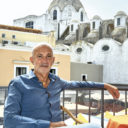
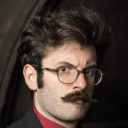


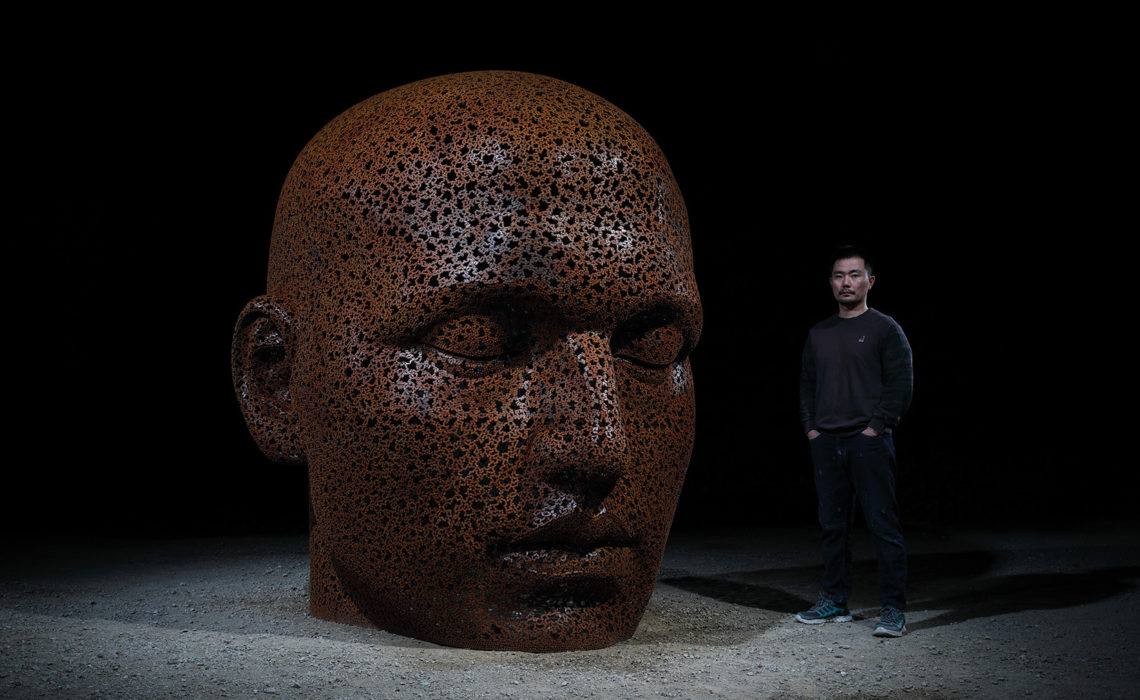
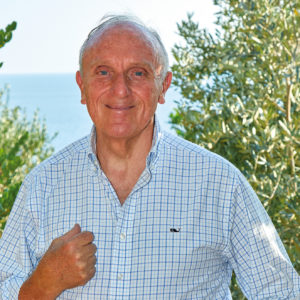
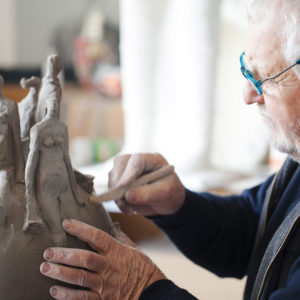
No Comments